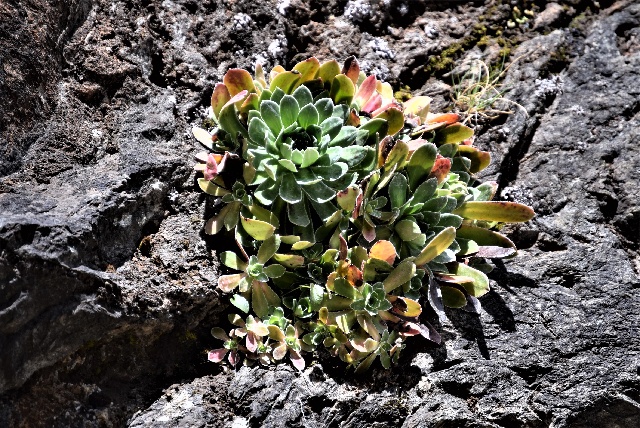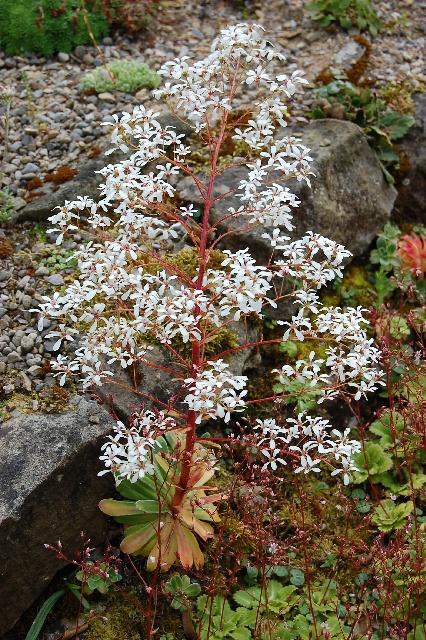Authors: Boiss.
Forms large, flat, monocarpic rosettes with 3-6cm long, broadly strap-shaped leaves differing in length and breadth throughout its extensive geographical range. If the lateral rosettes are suppressed, the main rosette grow correspondingly larger. Leaves glaucous, distinctly toothed and lime-encrusted. Flowering stems 30-60cm long branching to form a long pyramidal panicle. Flowers numerous with 6-10mm long white petals, typically unspotted but in a number of varieties having either light of deeper red spots. Botanically S. cotyledon is divided into two broad types, a northern form (genuina) with long broad leaves and an inflorescence which does not branch right from the base of the stem and a southern form (pyramidalis) distinguished by shorter narrower leaves and a broadly pyramidal inflorescence branching right from the base. Iceland and Scandinavia through central Europe to the Pyrenees, usually on acidic rocks. Horticultural varieties have been selected from the natural variation occurring throughout the natural range and given cultivar names. The following are those most frequently encountered: 'Caterhamensis', reputedly a selection from the Norwegian type. Very vigorous and makes a particularly long inflorescence, sometimes up to 90cm The petals are heavily red-spotted. Might be of hybrid origin. 'Montavonensis' occurs naturally in central Europe. Leaves broad, shorter, inflorescences red-stemmed not much more than 30cm long. 'Norvegica' is a northern form with leaves tapering to a sharp point. Flowering stem starts to branch from about 8cm up from the base and bears up to fifty side shoots each carrying up to twenty starry, pure white flowers. 'Icelandica' is very similar. 'Pyramidalis' branches right from the base of the flowering stem making a very broad, pyramidal inflorescence. Basal leaves long and narrower than the type. Occurs naturally in the Pyrenees and sparingly in the Valais and the Savoy Alps. Makes a beautiful garden plant. 'Southside Seedling'; see S. X 'Southside Seedling'. All these grow well in cultivation, provided they are given a semi-shady position and a fairly lime-free soil. [Pl.442].


Sign up for our newsletter to receive our monthly update direct to your inbox. Featuring our latest articles and news.
Built by Atomic Smash

